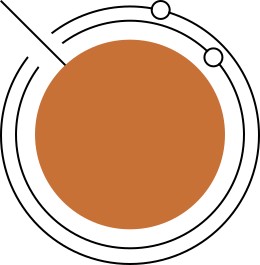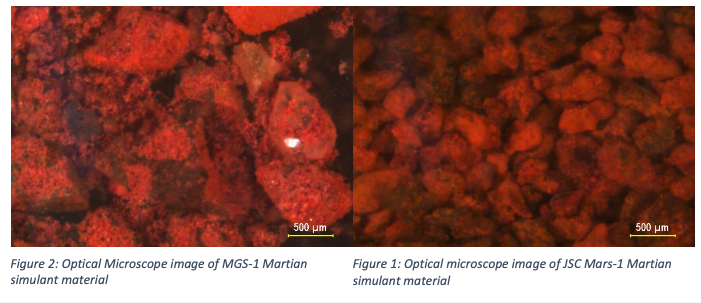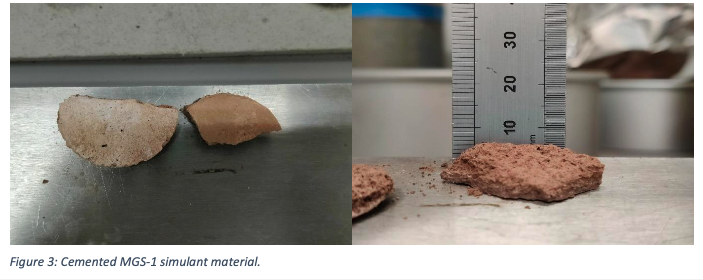
The grant was approved for funding on 21st July 2022 with the final contract being approved on the 3rd October. It lasts for three years and is worth €320,800 in total.
Congratulations to Jack Finch and his supervisors Drs Penny Wozniakiewicz, Jon Tandy and Professor Mark Burchell on the award, which is co-funded by Kent’s Graduate Research College.
The main objectives of the work are:
- The study of icy impact craters on Mars.
- The study of cratering processes on Phobos.
- The comparison of cratering processes within varying simulant materials.
The work will lead to a deeper understanding of the crater formation process in silicate-dominated permafrost materials. It will also strengthen our knowledge of material transport between the Martian and Phobosian surfaces’, providing an experimental test of current computational models and allowing more to be said regarding the formation of Phobos.

The M-PIP project logo depicting Mars and its moon Phobos and Deimos along with an asteroid impact.
The Open Discovery Ideas Channel, a part of the Open Space Innovation Platform (OSIP), runs through ESA’s discovery and preparation program. The channel allows ESA to discover and invest in novel research ideas that encourage the development of the space research sector, working with both research institutions and industry partners. Each month ESA select up to five projects to be co-funded by ESA themselves and the host institution.
Impact cratering, the most common geological process throughout the Solar System, provides a valuable insight into the near-surface regions of planetary surfaces and recent missions to the outer Solar System have shown ice-silicate mixtures to be much more prevalent than previously thought. Past experimental investigations of impacts into ice-silicate mixture targets have focused heavily on the ice-dominated mixtures assumed to be prevalent throughout the outer Solar System, leaving the silicate-dominated mixtures thought to be present on Mars untouched. Furthermore, large impact events occurring on the surface of Mars are thought to remove large amounts of material, allowing it to escape the planet. Rather than this material simply escaping to inter-planetary space, a lot is assumed to interact with the Martian moons – particularly Phobos. The identification and analysis of this material, along with the quantity detected, is thought to be key in clarifying the mystery surrounding the origin of the Martian satellite system.

The Mars and Phobos Impact Processes (M-PIP) project aims to use the two-stage light-gas gun at the University of Kent to investigate the crater formation process within silicate- dominated ice-silicate mixtures, and to experimentally investigate the still debated formation mechanisms for the Martian moon Phobos. Utilising high quality planetary simulants developed at the Exolith laboratory at the University of Central Florida, M-PIP will identify slight underlying differences in the cratering mechanisms due to the nature of the target material. Analysis of these simulant targets (and ejecta collected material) will provide a deeper understanding of mineral projectile emplacement processes within mineral targets, and the interactions occurring between Martian ejecta and Phobos. Alongside the impact experiments, M-PIP will probe the material behaviours of planetary simulant materials investigating how they compare the predicted behaviour of the Martian regolith material – and how they may aid in the future human habitation of Mars.

The M-PIP project team consists of: Jack Finch (University of Kent), Dr. Penny Wozniakiewicz (University of Kent), Dr. Jon Tandy (University of Kent), Prof. Mark Burchell (University of Kent), Dr. Vassi Spathis (University of Kent), Dr. Luke Alesbrook (University of Kent), Dr. Chrysa Avdellidou (Observatoire de la Côte d’Azur, Nice), Dr. Elliot Sefton-Nash (ESA), and Dr. Detlef Koschny (ESA, Technical University of Munich).
The results of M-PIP will enhance the potential exploitation of both the Martian Moons eXploration (MMX) and ExoMars upcoming Mars missions.
The Exolith laboratory aims to develop high-fidelity planetary simulants for a range of Solar System targets working with NASA and ESA, and a range of other partners. Read more about the Exolith laboratory here.
Read more about the ESA OSIP platform here.